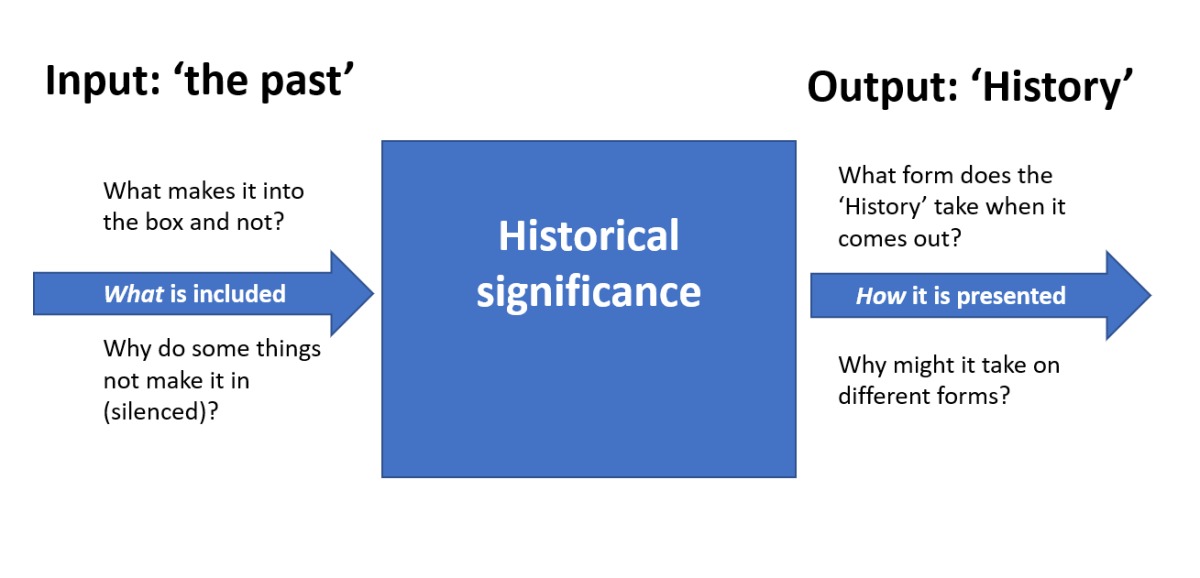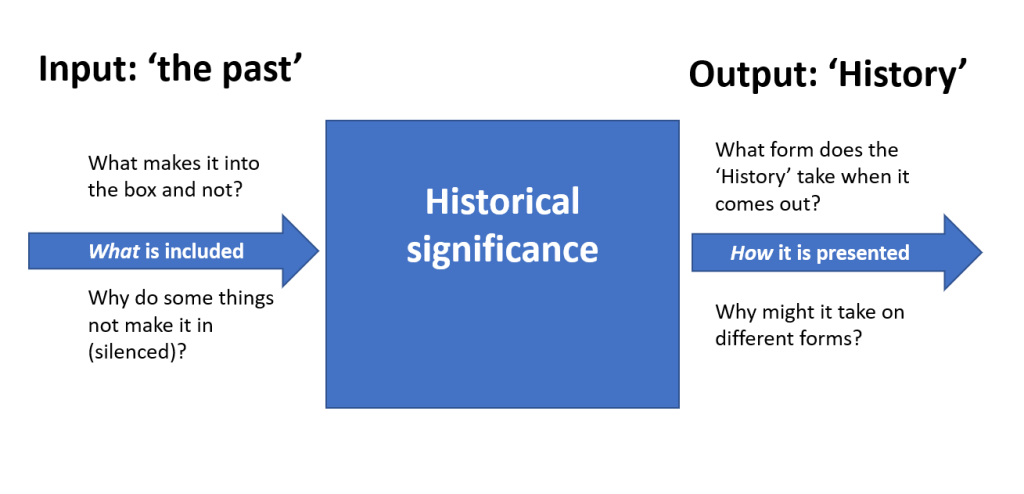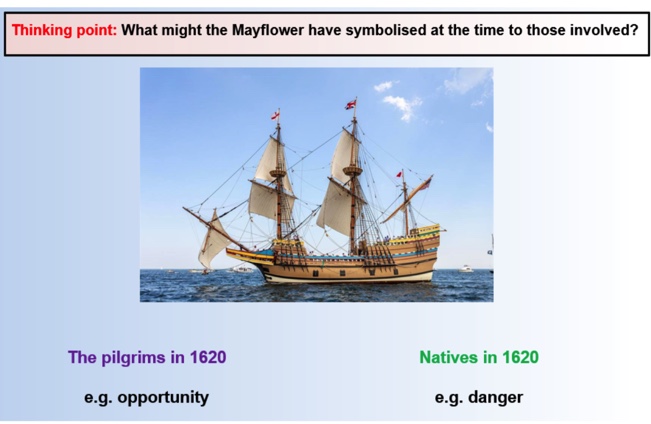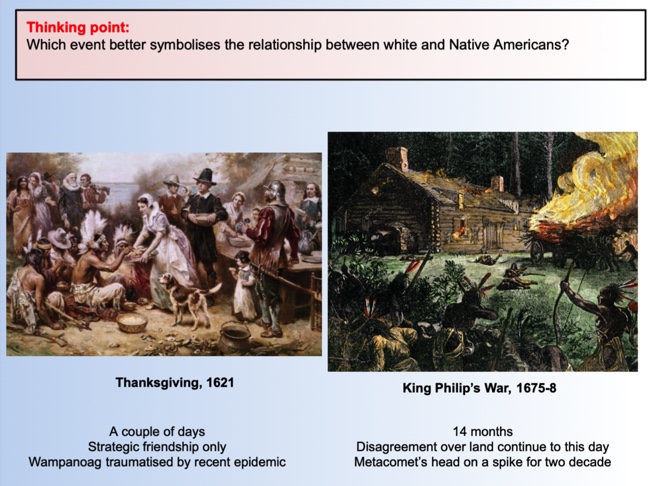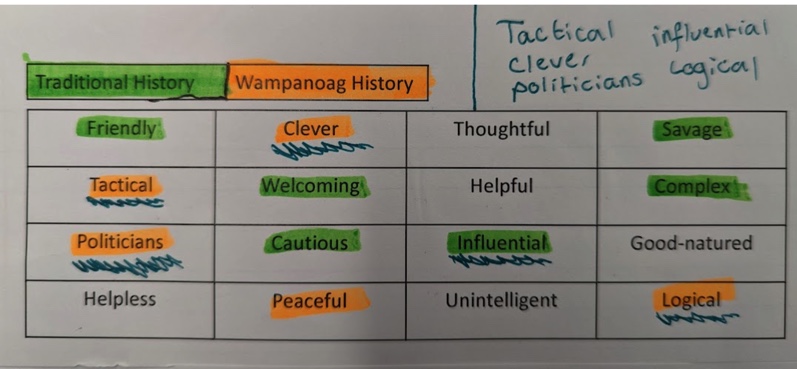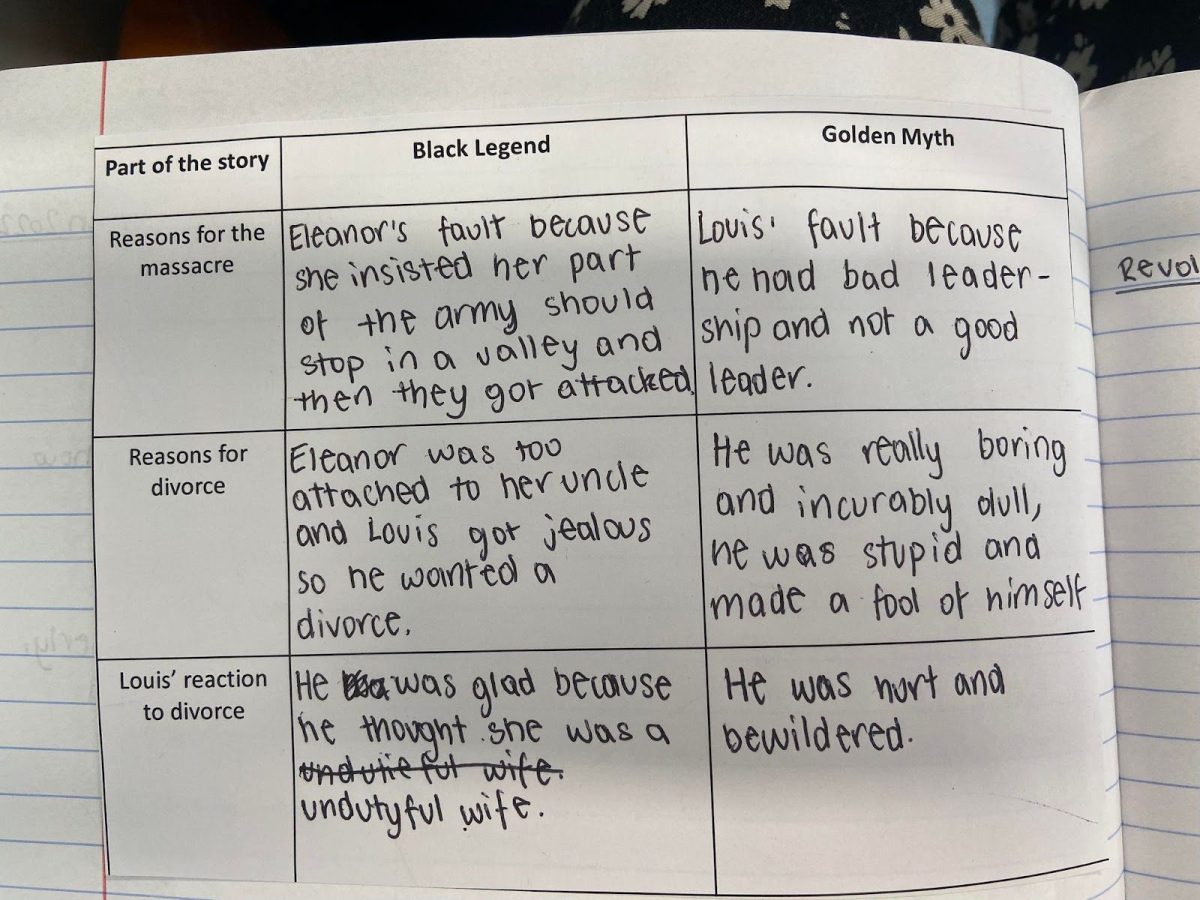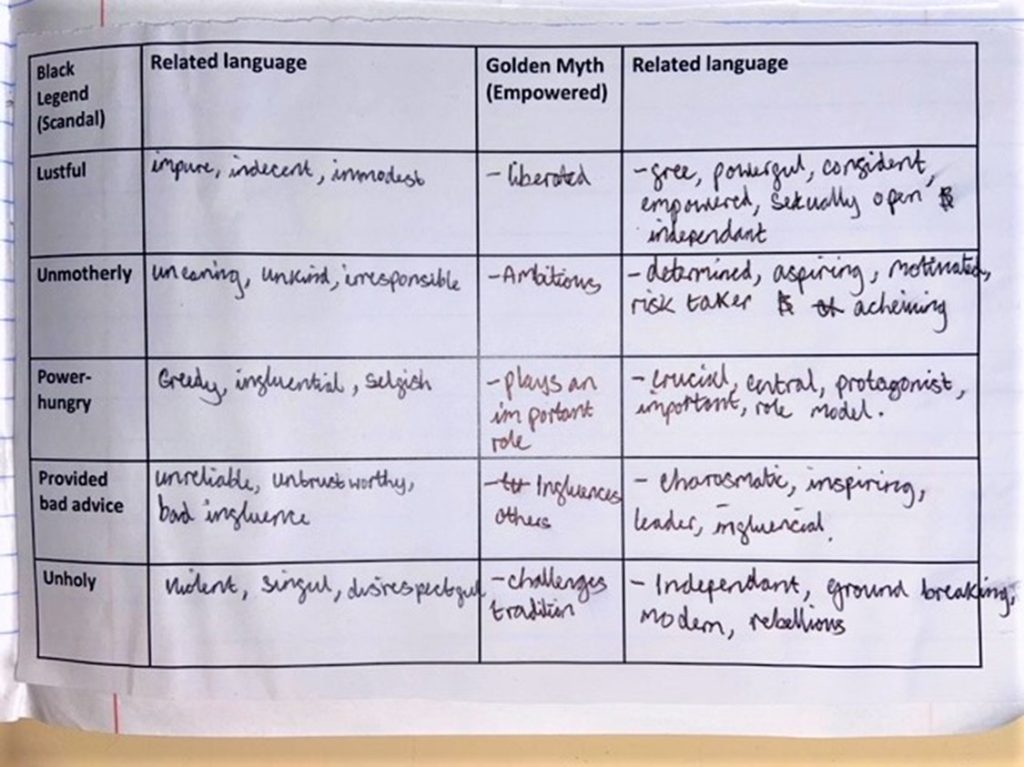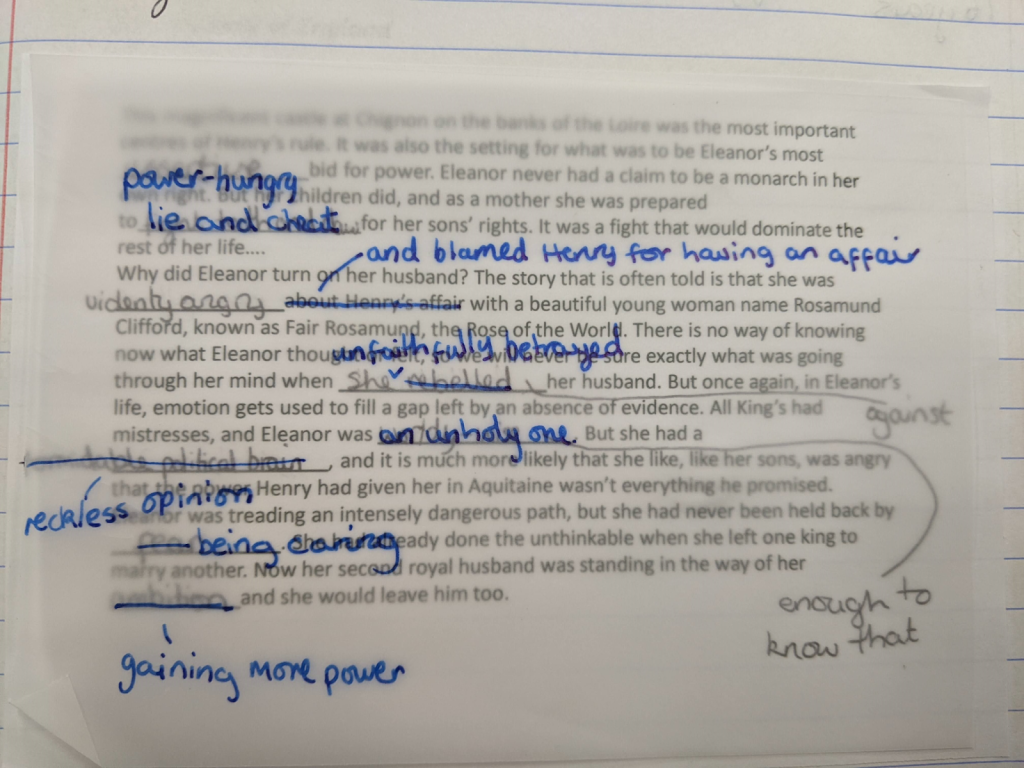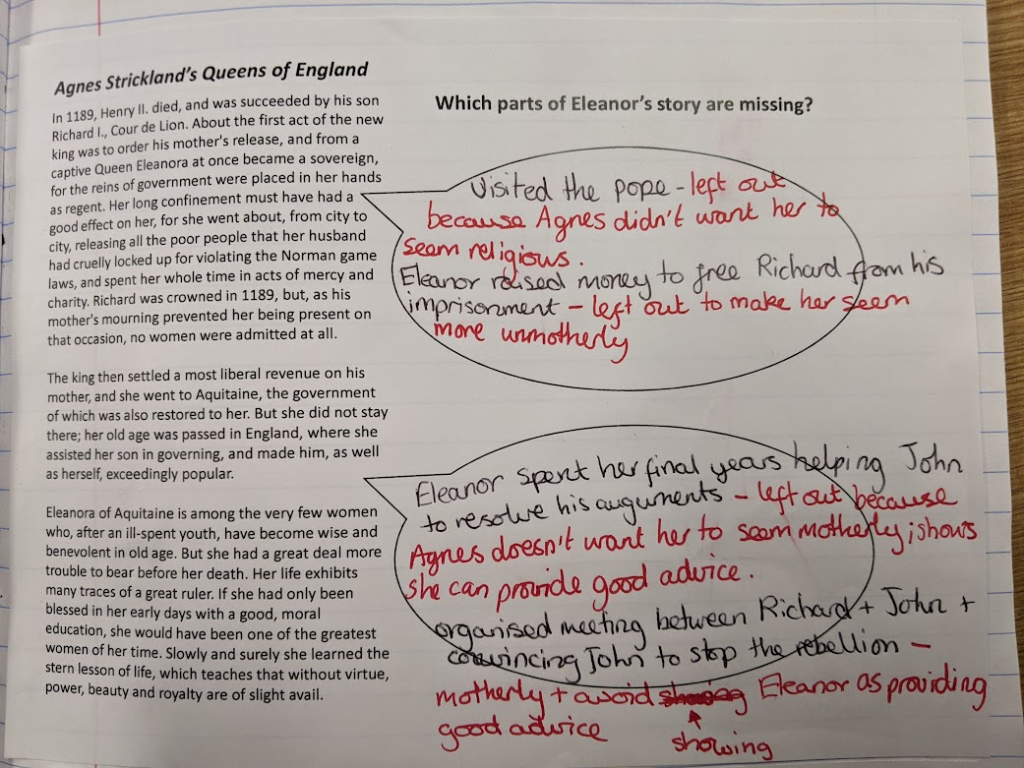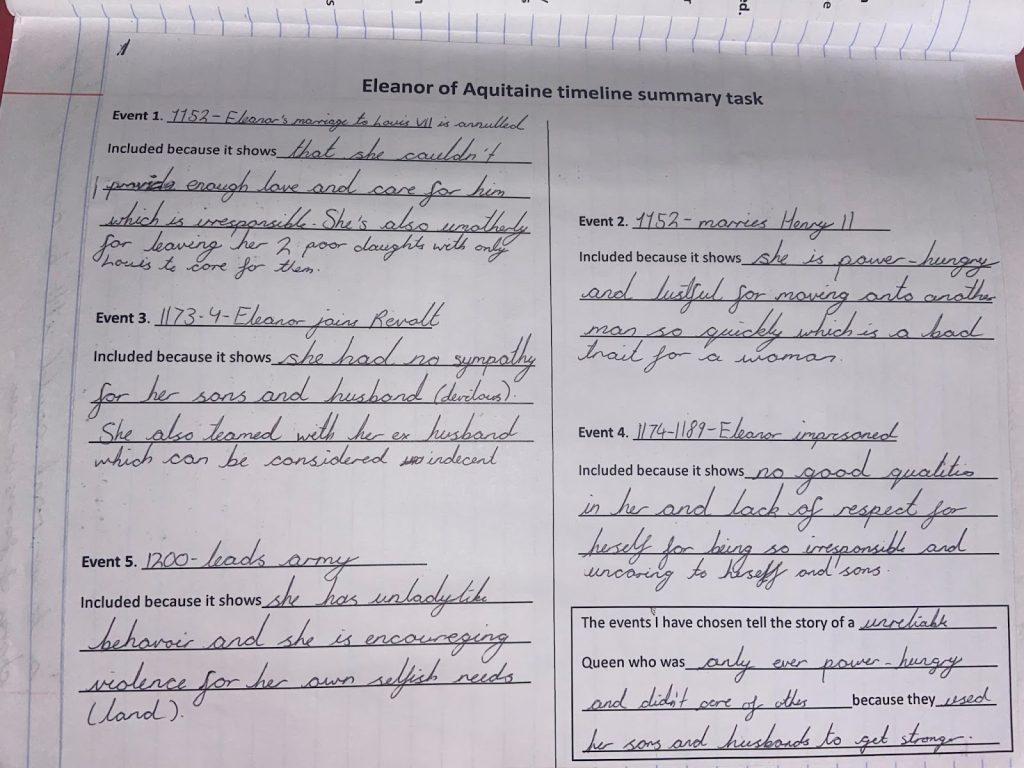Why read with our pupils at all?
It is a struggle to put into words just how important reading is in pupils’ everyday lives and for success in our subject. Keith Stanovich uses the phrase ‘the Matthew Effect’ to describe the way in which early exposure to reading usually leads to faster progress later in education, as it enables pupils to comprehend and work out new vocabulary more easily. As such, the vocabulary gap between weaker and stronger readers grows as the ‘rich get richer and the poor get poorer’. This often manifests in History classrooms where some pupils already have rich mental pictures when you ask them about complex vocabulary. However, as rich vocabulary is so core to the discipline of History, thinking about what and how to read is not just a pedagogical issue, it is an issue of accessibility in our subject. This is a social justice issue: there is a proven link between poverty and social disadvantage and low levels of literacy. By the age of 15, 55% of non-FSM students have a reading age of 15 or more compared to only 44% of FSM students.
The only way for History teachers to narrow this gap is to expose our pupils to more vocabulary through reading. While we might assume that doing more reading in the classroom might put pupils off our subject, the reality we have found at Sawston is that if you choose the right text, pupils comprehend the past better, understand the discipline of History better, and therefore find more enjoyment in the subject itself. And to provide some evidence to back this up: we read extensively nearly every lesson in our department and we are still the most popular option subject in the school!
Further reading:Why is reading so important to all subjects?
1. I strongly recommend ‘Closing the Reading Gap’ by Alex Quigley or a shorter blog by him: https://thinkingreadingwritings.wpcomstaging.com/2020/03/08/teaching-reading-its-not-as-niche-as-you-think/
2. For more on the Matthew Effect: https://researchschool.org.uk/unity/news/beware-of-the-matthew-effect-in-our-schools
Why less isn’t more when it comes to text choice!
We might assume that teaching via a broken-up bullet point list presents a more accessible form of reading to our pupils. However, as McKeown and Beck have stated, pupils need to make their own meaning from the text they read to be able to fully comprehend it. Meaning is made when a learner can attach new information to existing knowledge. We therefore need to maximise opportunities within the text for levelling the playing field by spelling-out the underlying knowledge needed to make meaning from it. A big part of this process actually takes place in the subtext, extra details and implicit connections found within a text; all of these contribute to the bigger picture and provide the background knowledge that pupils need to make sense of the overall gist. When we cut the ‘extras’ because we see them as superfluous, we also unwittingly remove opportunities for meaning-making and therefore make it harder for our pupils to understand. This is because, when texts are boiled down to the basics alone, pupils are forced to rely on their own context to give it sense. For those pupils whose pre-existing knowledge is lacking, they are less able to fill the gaps and reading the text becomes more challenging for them. Therefore, behind the following suggestions of what kinds of reading we should do with our pupils, there is an underlying belief that we should be using extended prose with our pupils.
‘Green flags’ to look for when choosing your texts
- The power of narrative and story – Reading scientists such as Daniel Willingham and also Beck and McKeown emphasise the usefulness of a narrative structure for its “power and familiarity”. One particular benefit is that narrative is inherently causal and explanatory in nature; making meaning-making easier for pupils, by reducing the need for pupils to make connections between different parts of the text themselves. Furthermore, narrative is an extremely familiar form of text to young learners, who encounter it on a regular basis in primary school, but also they have experienced narrative and storytelling in daily human interactions. Humans are wired to remember stories and as teachers we can utilise this in the classroom to support pupil retention of knowledge. Research studies have shown that pupil retention of knowledge after using a narrative text versus an informational text was much higher (see blog post by Willingham below).
- Texts with human voice – Beck and McKeown argue that the power of narrative structure can be amplified by what they term “engaging discourse”. They describe this “giving voice to humanity of events being portrayed and the threads that connect them to principles, motivations and consequences”. This fits in with the recent work done by many in the History community including Christine Counsell and Jonathan Grande, which has focussed on using stories to develop pupil understanding about both periods and concepts. We certainly have found enquiries we do in Sawston which are centred around the story of an individual, such as our enquiry on Eleanor of Aquitaine, it is clear that our pupils really find themselves growing an attachment to Eleanor, and therefore wanting to know more about her.
- Texts that ‘show not tell’ – by using rich narratives and stories we can make the abstract more concrete. Providing a dictionary definition of concepts such as ‘Parliament’ is unlikely to have a significant impact on pupils, whereas if we provide pupils with an account of a direct interaction between Parliament and the King in the build up to the Civil War, pupils are much more likely to come away with a better understanding of the work. For a more detailed illustration of how this could be developed, I recommend Jonathan Grande’s blog on why Hinterland is so important: https://curricularpasts.wordpress.com/2022/03/06/6-this-week-in-history-why-the-hinterland-is-core/
- Historical scholarship – while historical scholarship might on the surface seem quite scary to expose pupils to, Rachel Foster and Tim Jenner have argued that to understand History as a discipline we need to read historians’ work. Furthermore, pupils have to do this within GCSE and A-level papers on interpretation questions, so unless pupils are regularly familiarised with a range of academic writing styles, they will not be properly prepared for these difficult tasks. Obviously some historical scholarship is not that accessible for pupils in our classroom, but if we make careful choices, we can find scholarship that is both wonderfully written and can often reveal so much about the process and methods the historian has used. If you plan for, and sufficiently scaffold complex text, you can make relatively difficult text accessible. I’m not suggesting for a moment that every text shown to pupils in lessons needs to be authentic historical scholarship, but it is an extremely helpful tool in a history teacher’s arsenal.
Further reading on what to read:
- My favourite summary on what we should read in the History classroom – Making Sense of Accounts of History: Why Young Students Don’t and How They Might by Margaret G. McKeown, Isabel L. Beck in Teaching and Learning in History (G. Leinhardt, I.L. Beck, & C. Stainton, Eds.) (1st ed.). Routledge.
- My favourite book on the Science of Reading and the complexity of different texts: Willingham, Daniel (2017), The Reading Mind: A Cognitive Approach to Understanding How the Mind Reads. For a shorter version on the benefits of using narrative: http://www.danielwillingham.com/daniel-willingham-science-and-education-blog/storify-make-science-tell-a-story
- On the benefits of using personal story: https://www.history.org.uk/secondary/resource/10638/compressing-and-rendering-using-biography-to-te and Jonnie Grande: https://curricularpasts.wordpress.com/
- On the benefits of using historical scholarship in the classroom and a range of strategies: https://www.history.org.uk/publications/resource/9561/making-reading-routine
How should we plan for reading?
However, while the text in itself is hugely important, this is not where our thinking should stop. To support our pupils to generate meaning from the text they are reading we need to plan appropriately to ensure this is happening.
What could this look like?
- Summarising material is a really helpful way of getting pupils to process the text that they are reading and to check their comprehension of what they have read, to ensure they have made necessary inferences. We regularly use ‘guided readings’ (an example is shown below) within lessons where pupils are expected to summarise in an image or a sentence each paragraph of the text. This ensures all pupils are having to process the information themselves, rather than just relying on questioning a few within the classroom. Linked to this, Beck and McKeown indicate that simple acts of stopping to question what one reads and being asked to frame information so as to explain it- to oneself, or to one’s classmates – hold great power in the meaning-making process”.
- Plan ‘big’ questions – If we ask our pupils a set of very specific basic comprehension questions pupils might be able to skim through the text looking for a specific phrase, and therefore entirely miss the meaning of the text. Furthermore, if there are a set of 10 rather random questions placed next to each other it is encouraging only very localised inference making, rather than to understand the wider purpose or argument of the text. Teachers should plan ‘big’ questions’ that provide pupils with a focus to guide them through the text, which enables them to draw meaning together. At Sawston we have found this is achieved through questions that have a disciplinary focus. For example, if doing a change enquiry on the idea of ‘race’, you might ask pupils to choose when they think key turning points were in the development of racial ideas.
- Create the situational model in pupils’ heads by using images and clear focus – As we read, we forget the exact wording of a text, but what we retain is a ‘model’ or mental representation of the text. This is sometimes called a situational model, which in simple terms is the ‘picture’ we have of the situation we are reading and, as we read more text, we update the model we have in our head to reflect what is happening. To do this we have to have our own background knowledge to attach the information from the text to. For example, to understand a text describing how a goal was scored in a football match, it would be a lot easier if you knew the role of different players and the names of parts of the pitch. Therefore to help our pupils secure these situational models in their head, we can use maps and images to support the development of their knowledge as we read through the text. Mike Hill has talked about this in much more detail in his Teaching History article on worldbuilding. However, it is also about drawing pupils to the important parts of the text, so they are able to prioritise which information is important for the development of their mental picture. For example, while pupils read a short extract from a Victorian historian about Eleanor of Aquitaine we might ask them to highlight any words that show that the historian sees Eleanor as a ‘Black Legend’. This enables them to focus on the parts of the text that directly link to our enquiry question ‘Why has Eleanor of Aquitaine been represented so differently?’
- Ask questions to connect the text to pupils’ existing schema. To be able to make new meaning from the text they are reading (ie. make an inference) pupils have to be able to connect what they have read to prior knowledge. Therefore, questioning as you read through the text, checking understanding of prior vocabulary and making explicit connections to previous topics is also really helpful. You could also get them to predict what might happen next, which is a useful tool in ensuring that the new information links to prior knowledge. For instance, I might ask pupils to predict Eleanor’s next actions or a response to an event, based on their rich knowledge of her already.
- Graphic organisers – sometimes particular texts fit certain ‘non-fiction’ text models, which is helpful as these structures can be taught to aid pupil comprehension. For example, reading texts that try to emphasise differences and similarities between different groups often follow a compare and contrast structure. Therefore it might be useful to use a venn diagram as a visual depiction and get pupils to draw out comparisons. Furthermore, consequence enquiries often follow a cause and effect text model so we can benefit our pupils’ meaning making by using a cause and effect diagram. For more information on the non-fiction text models see the blog post linked below, but also attached is an example of a visual organiser in action from our GCSE unit on Making of America. Pupils are expected to explain the links between different events, and in so doing make meaning of the content they have been given.
Example of graphic organiser used for consequences thinking
Further reading on how to plan for reading:
- Jonnie Grande suggested here: https://curricularpasts.wordpress.com/2022/03/13/7-this-week-in-history-ive-been-checking-for-understanding-less-this-is-what-ive-been-doing-instead/
- For more on meaning making and inferences from text I recommend several chapters from the Art and Science of Primary Reading by Christopher Such
- For more on worldbuilding read the Teaching History article by Mike Hill here: https://www.history.org.uk/publications/resource/9922/curating-the-imagined-past-world-building-in-the
- For more on graphic organisers: https://www.readingrockets.org/article/how-teach-expository-text-structure-facilitate-reading-comprehension
How should we read?
I am ashamed to admit I used to be the teacher with the huge misconception that getting pupils to read independently was best for the pupils because it allowed them to practise reading. The reality is with such mixed ability classes at KS3 I was asking pupils with a reading age of 8 to read something with a reading age of 14! On reflection, I shouldn’t have been surprised at their lack of comprehension after independent reading or why some pupils seem so disengaged.
Neither is it always helpful to get pupils to read outloud without support. Our own pupils at Sawston Village College (when surveyed as part of a reading review) said they really didn’t like so-called ‘popcorn reading’ where pupils end up getting randomly picked to read aloud to the class. Some pupils were embarrassed to read, and many commented that they felt too socially anxious to engage with the meaning of the content. Research suggests that a pupil has a smaller working memory (particularly true of dyslexic and ADHD pupils) their energy will go on trying to read rather than comprehending the text, and so their own learning will be hampered by reading aloud. Similarly, if pupils fear they are going to be picked on, or even know they well, they will put their concentration into sounding ‘right’ rather than understanding what’s being said. It was also notable amongst pupils that when a pupil reads aloud who is lacking in fluency, it will hamper the comprehension of the text for the rest of the class. Even one of the highest attaining pupils in our school commented that she struggles to understand content when a nonfluent reader is reading the text aloud. All of these observations made me realise why reading can be so unpopular in a classroom environment.
But it doesn’t have to be this way! We should be really thinking about how we read, therefore, not just what we read. We should be scaffolding reading, just as we would any other kind of difficult task, to make it manageable for those with weaker literacy.
What could this look like? There are many methods to reading in the classroom, which I will not explore in great detail here but I will share what I have found to be particularly successful in my own classroom. My main conclusion with all of this is that the answer to the question above depends on the purpose of the reading you are engaging pupils with.
- With new material, I have found teacher-led reading to be extremely effective. I have genuinely noticed a considerable difference in my pupils’ understanding and retention of new knowledge just from changing to pupil independent reading to teacher-led reading. Pupils seem to engage with the text much more, often asking questions about what we are reading in a way they never would have before.
- ‘Chewing’ the text – Just because you are reading aloud, doesn’t mean pupils have to become passive readers. In Mike Hill’s recent session at the HA he talked about getting pupils to ‘chew’ the text where teachers break up the text with questions to check for understanding. It can be really helpful I’ve found in particular to generate questions that can ensure the material in the text links back to prior knowledge, for example, asking questions such as, where have we seen this before? Does this remind you of anything? Another really useful strategy I’ve found is to pause and check pupils’ understanding of key vocabulary. Asking pupils to write down what a word means to them on a mini-whiteboard is a good way to avoid pupils becoming passive and enables you to check understanding before moving on.
- Scene setting – However, there are some occasions where you might not want to pause and ‘chew’ the text as frequently. For example, you might choose to use historical fiction to set the scene and develop a sense of period: as a teacher therefore you might make the decision therefore to pause less to immerse pupils in the ‘sense’ or the ‘flavour’ of the text.
- Re-reading – However, to support pupils develop their own reading they must have opportunities to read the text for themselves too. This can be encouraged by the use of reading rulers (or fingers or lines of text) but also by giving opportunities to repeat the same reading themselves. You could, for example, read the text through once and they summarise and then pupils have to go back and read it again looking for specific evidence to support different statements.
- Re-reading to develop fluency – To support pupils with understanding new words or particularly key phrases, choral reading can be really beneficial. This is where pupils say a word in unison after the teacher says it aloud. Paired reading, where pupils read to each other, also can enable pupils to gain confidence with reading aloud especially if the text has been modelled before.
- Modelling good reading habits – alongside reading out the text, teachers can also support pupils’ development of good reading habits by narrating their own thought processes when reading. For example they might openly say that a bit of text is difficult or confusing, and then follow this up by explaining that they should read it again, to ensure that the meaning is clear. They could ask questions directly about meaning as if they are going through the reading process themselves, for example as Tom Needham suggests, ‘What does this mean?’ or ‘I know this is linked to XXX so does this mean?’ or it could encourage comparisons, such as ‘Does this contrast with what we know already or not?’
Further reading on how to read:
- For more information on each method see Alex Quigley’s blog post: https://www.theconfidentteacher.com/resources/whole-class-reading-approaches/
- How to develop reading fluency without popcorn reading: https://www.shanahanonliteracy.com/blog/teaching-oral-reading-fluency-to-older-students
- Echo-reading approach from David Didau: https://learningspy.co.uk/reading/echo-reading-bridging-the-gap-between-text-and-meaning/
- For an overview of good reading strategies I’d really recommend going through this audit by Tom Needham: https://tomneedhamteach.wordpress.com/2022/02/21/reading-in-class-questions-for-heads-of-department/

